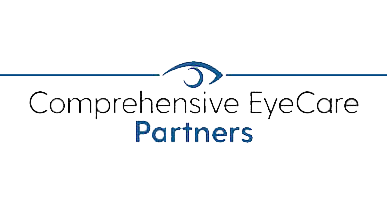Are you over 40 and finding yourself holding books and phones at arm’s length to read them? Do you need reading glasses for close-up tasks? You might have presbyopia, a natural age-related vision change that affects nearly everyone as they get older. Refractive Lens Exchange (RLE) could be your solution for clearer vision.
Keep reading to learn more about RLE and how it can help you reduce your dependence on visual aids!
What is Presbyopia?

Presbyopia is a natural part of aging that typically becomes noticeable in your early to mid-40s. As you age, the natural lens in your eyes becomes less flexible, making it harder to focus on close objects.
This condition can continue to progress until about age 65. Common signs of presbyopia include:
- Difficulty reading small print
- Needing brighter light for reading
- Holding reading materials at arm’s length
- Eye strain when doing close work
- Headaches when doing detailed tasks
- The need for reading glasses or bifocals
What is RLE?
Refractive Lens Exchange, also called RLE, offers a permanent solution for presbyopia. During this procedure, your eye’s natural lens is replaced with an advanced artificial intraocular lens (IOL).
This replacement lens can help restore your ability to see at various distances. A significant advantage of RLE is that it prevents cataracts from developing later in life, as cataracts can only form in natural lenses, not artificial IOLs.
What to Expect During RLE
The RLE procedure is straightforward and typically takes 15 to 30 minutes per eye:
- Your RLE surgeon will instill numbing drops into your eyes
- Your surgeon creates a tiny, self-healing incision in your eye
- The natural lens is carefully removed using ultrasound technology
- An artificial intraocular lens is implanted
- No stitches are required
RLE surgery is performed on one eye at a time, with the second eye typically treated one to two weeks later.
What Will My Vision Be Like After RLE?

Understanding your potential vision outcomes after RLE is crucial for making an informed decision. Most patients experience excellent distance vision following the procedure, allowing them to engage in activities like driving or watching television without corrective lenses.
For near vision, patients typically achieve clear vision at a comfortable reading distance, which is ideal for most daily activities like using a computer, reading a menu, or checking your phone.
However, it’s important to note that some patients may occasionally need reading glasses for extremely fine print or extended periods of close-up work, particularly in low light conditions. Your specific results will depend on factors such as your pre-operative vision, chosen IOL type, and individual healing process.
How Do I Choose an IOL For RLE?
Selecting the right intraocular lens (IOL) is one of the most important decisions in your RLE journey. At Evergreen Eye Center, we offer advanced premium IOL options that can be customized to your visual needs and lifestyle.
Multifocal IOLs are designed to provide vision at multiple distances, helping you maintain independence from glasses for most daily activities. The Light Adjustable Lens offers a unique advantage: it can be fine-tuned after surgery to optimize your vision based on your healing and visual preferences.
During your consultation, your RLE surgeon will thoroughly discuss your daily activities, hobbies, work requirements, and vision goals. They will explain the specific benefits and limitations of each IOL option, helping you make the best choice for your individual needs.
This personalized approach ensures that your new lenses align with your expectations and lifestyle requirements.
Are You a Good Candidate for RLE?

The ideal RLE candidate is typically someone over 45 years old who has become frustrated with their increasing dependence on reading glasses or bifocals due to presbyopia. Good candidates should be in generally good health and have had stable vision for at least a year.
Your eyes should be healthy, without any history of significant eye diseases such as advanced glaucoma, retinal detachment, or severe diabetic retinopathy. During your consultation, we’ll perform a comprehensive eye examination to evaluate your eye health and determine if RLE is the best option for you.
We’ll also discuss your lifestyle, occupation, and vision goals to ensure RLE aligns with your needs and expectations.
Should I Consider LASIK Instead of RLE?
For patients with presbyopia, RLE is typically the more appropriate choice over LASIK. While LASIK is an excellent procedure for certain vision problems, it cannot address the underlying cause of presbyopia – the natural aging of your eye’s lens.
At Evergreen Eye Center, we specifically recommend RLE for our presbyopic patients because it addresses both the refractive error and the aging lens. Additionally, RLE prevents the future development of cataracts, providing a long-term solution for your vision needs.
Your consultation with our experienced team will help determine the most appropriate procedure for your specific situation, taking into account your age, eye health, and vision goals.
Take the Next Step Toward Clearer Vision
At Evergreen Eye Center, we specialize in RLE procedures and can help determine if this treatment is right for you. Our experienced team will guide you through the process, from initial consultation to post-operative care.
Ready to explore how RLE can help you see clearly at various distances? Schedule your appointment at Evergreen Eye Center today and take the first step toward reducing your dependence on reading glasses.

